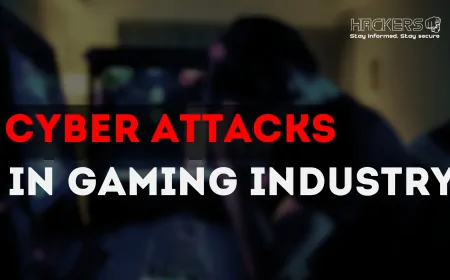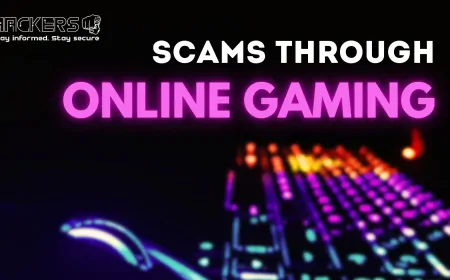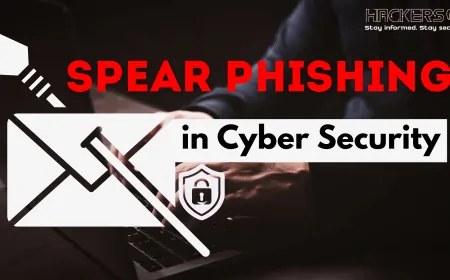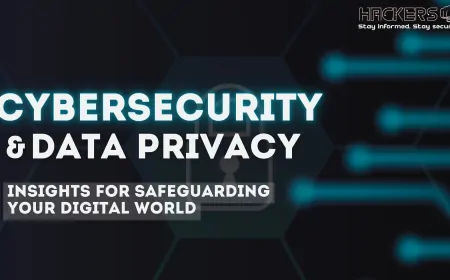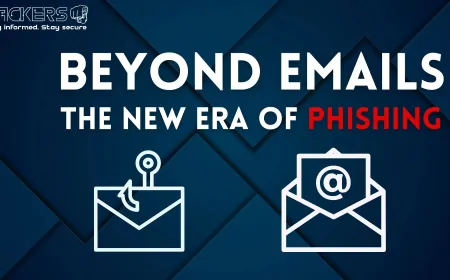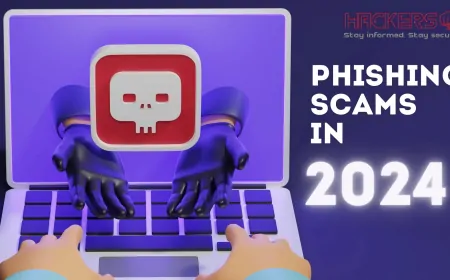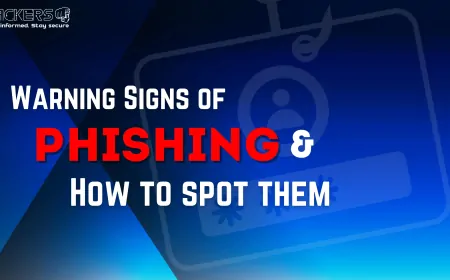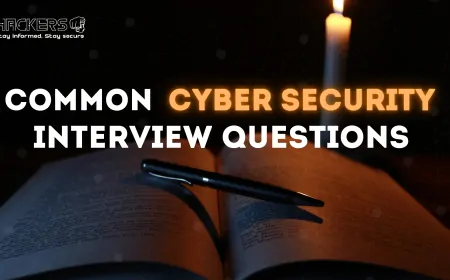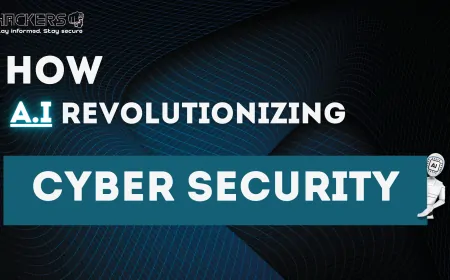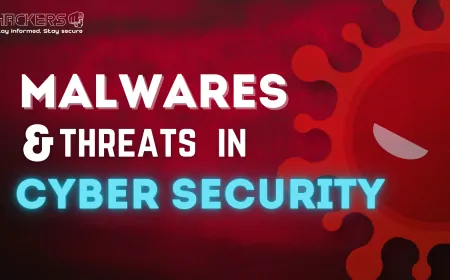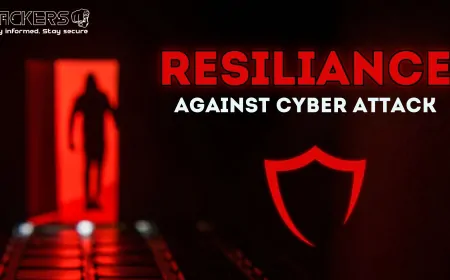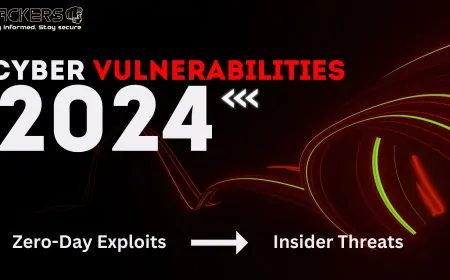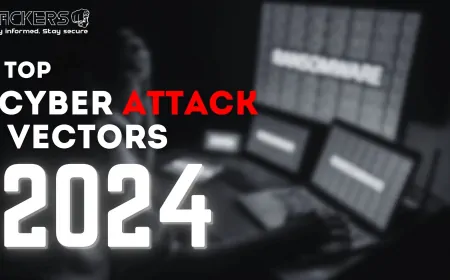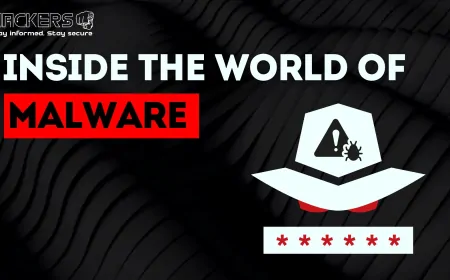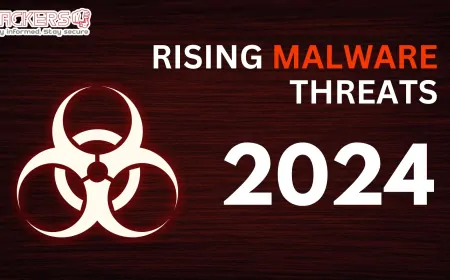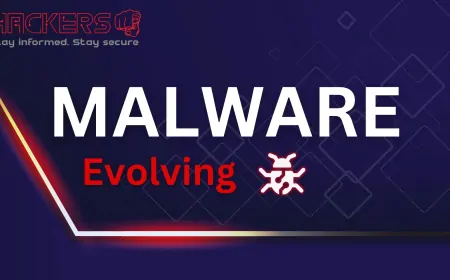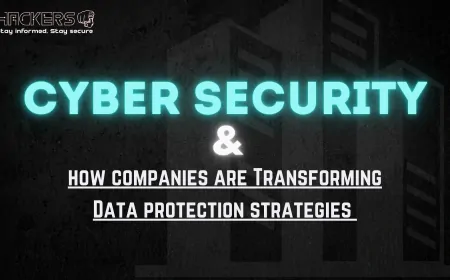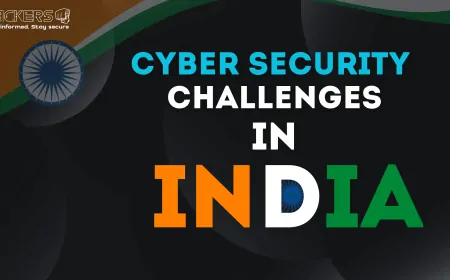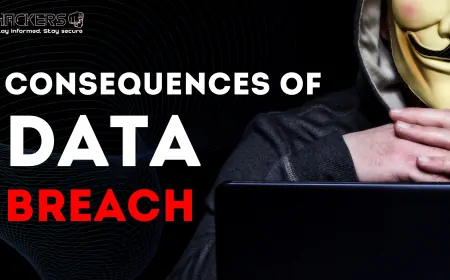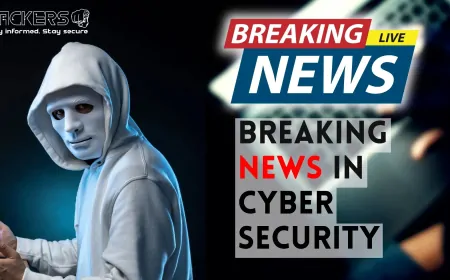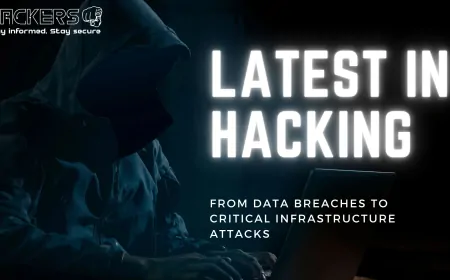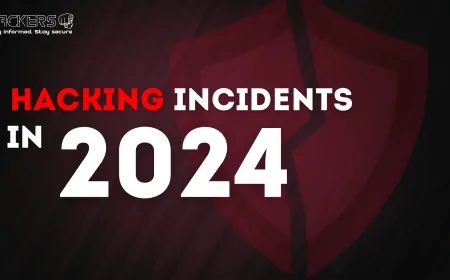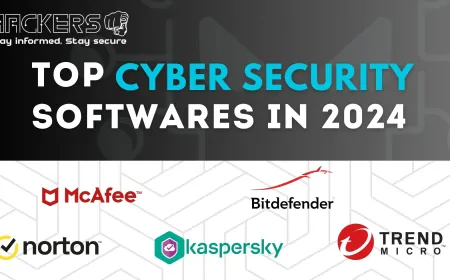Most Dangerous Hacker In The World [2024]
Discover the most dangerous hackers in the world for 2024, including the notorious DarkSide ransomware group, REvil (Sodinokibi), Lazarus Group, APT29 (Cozy Bear), and Equation Group. Explore their backgrounds, notable works, and the significant impact of their cyber-attacks on global security and infrastructure.
![Most Dangerous Hacker In The World [2024]](https://www.hackers4u.com/uploads/images/202409/image_870x_66daf5011c2f2.webp)
Introduction
The realm of cybersecurity is constantly evolving, and with it, the profiles of the Most Dangerous Hackers around the world. These individuals or groups have achieved notoriety due to their sophisticated attacks, significant impact, and the sheer scale of their operations. As of 2024, several hackers have made headlines for their formidable skills and the extensive damage they have caused. Understanding their methods and the consequences of their actions provides insight into the evolving nature of cyber threats and the ongoing battle to secure digital assets.
Defining "Dangerous Hacker"
A "dangerous hacker" typically refers to an individual or group with advanced hacking skills whose activities pose significant risks or threats to organizations, governments, and individuals. These hackers are characterized by their expertise in exploiting vulnerabilities, executing sophisticated attacks, and causing substantial harm. Here’s a detailed breakdown of what makes a hacker "dangerous":
Advanced Technical Skills:
Expertise in Exploits and Vulnerabilities: Dangerous hackers possess in-depth knowledge of software, hardware, and network vulnerabilities. They can identify and exploit weaknesses that are often overlooked by security professionals.
Proficiency in Programming and Scripting: They are skilled in programming languages and scripting, allowing them to develop custom malware, exploits, and attack tools.
Sophisticated Techniques:
Advanced Persistent Threats (APT): Dangerous hackers often use APT techniques, involving long-term, stealthy operations designed to infiltrate and remain undetected in target networks over extended periods.
Complex Attack Methods: Their attacks are often multi-faceted, involving various stages such as reconnaissance, initial compromise, lateral movement, and data exfiltration.
High Impact Potential:
Significant Financial Damage: The impact of their attacks can result in substantial financial losses due to theft, fraud, or the costs associated with remediation and recovery.
Operational Disruption: They can disrupt critical operations, causing downtime and affecting business continuity. This includes attacks on infrastructure, healthcare systems, or financial services.
Strategic Objectives:
Geopolitical Goals: Dangerous hackers, especially those linked to state-sponsored groups, may have geopolitical or strategic objectives. Their attacks can influence political outcomes, destabilize governments, or advance national interests.
Corporate Espionage: They may target specific companies to steal trade secrets, intellectual property, or competitive intelligence, giving their sponsors a strategic advantage.
High-Level Targeting:
High-Profile Targets: Their attacks often focus on high-value targets such as government agencies, multinational corporations, or critical infrastructure. The aim is to maximize the impact and visibility of their activities.
Sensitive Information: They seek out and exploit sensitive or classified information, including personal data, financial records, or confidential communications.
Evasion and Cover-Up:
Stealth and Evasion Techniques: Dangerous hackers employ advanced techniques to avoid detection, such as using encryption, anonymization, and anti-forensic measures.
Covering Tracks: They are adept at covering their tracks, making it challenging for investigators to attribute attacks or understand their full scope.
Influence and Motivation:
Ideological or Political Motives: Some dangerous hackers are driven by ideological or political motives, aiming to promote a cause or challenge a perceived injustice.
Monetary Gain: Others are motivated by financial gain, engaging in activities like ransomware attacks, fraud, or theft of valuable data for profit.
1. DarkSide Ransomware Group
Background
The DarkSide ransomware group emerged in late 2020 and quickly gained notoriety for its sophisticated and highly disruptive cyber-attacks. Operating on a ransomware-as-a-service (RaaS) model, DarkSide allows other cybercriminals to use its ransomware tools in exchange for a share of the profits. The group targets large organizations and critical infrastructure to maximize the impact of its attacks.
Achievements
-
Colonial Pipeline Attack (2021): One of DarkSide’s most significant and widely reported attacks was against Colonial Pipeline, a major U.S. fuel pipeline operator. The attack led to a major fuel supply disruption on the U.S. East Coast, causing widespread panic buying and fuel shortages. The incident highlighted the vulnerabilities in critical infrastructure and the severe consequences of ransomware attacks.
-
High-Profile Targets: DarkSide has also targeted other prominent organizations across various sectors, including healthcare, finance, and manufacturing. Their ability to execute large-scale, high-impact attacks has cemented their reputation as one of the most dangerous ransomware groups.
Notable Works
-
Ransomware-as-a-Service (RaaS) Model: DarkSide operates using a RaaS model, which allows other hackers to use their ransomware tools for a cut of the ransom payments. This model has enabled them to expand their reach and increase the scale of their operations.
-
Double Extortion Technique: DarkSide employs a double extortion tactic where they not only encrypt the victim’s data but also steal sensitive information and threaten to release it publicly if the ransom is not paid. This method increases pressure on the victim to comply with their demands.
-
Public Relations: The group has been known to issue statements and communicate with victims through its own leak site, where they list victims and publish stolen data to pressure the targets into paying the ransom.
Impact
-
Economic Disruption: The DarkSide ransomware attacks have caused substantial financial losses for the targeted organizations. The Colonial Pipeline attack alone resulted in significant operational disruptions and economic repercussions for the fuel supply chain.
-
Operational Challenges: DarkSide's attacks have led to increased scrutiny of cybersecurity practices, particularly in critical infrastructure sectors. The group’s actions have prompted many organizations to reassess their security measures and invest more heavily in cybersecurity defenses.
-
Regulatory and Policy Changes: The high-profile nature of DarkSide's attacks has influenced policy discussions on cybersecurity and ransomware. Governments and regulatory bodies are increasing their focus on ransomware threats, implementing stricter regulations, and promoting better practices to prevent such attacks.
2. REvil (Sodinokibi)
Background
REvil, also known as Sodinokibi, is a notorious ransomware group that emerged in early 2019 as a successor to the GandCrab ransomware. The group operates on a ransomware-as-a-service (RaaS) model, allowing other cybercriminals to utilize their ransomware tools in exchange for a share of the ransom payments. REvil has gained infamy for its aggressive tactics and high-profile attacks, making it one of the most dangerous ransomware groups globally.
Achievements
-
Kaseya VSA Attack (2021): One of REvil’s most significant attacks targeted Kaseya VSA, a remote management tool used by many managed service providers (MSPs). The attack exploited vulnerabilities in Kaseya’s software, affecting thousands of organizations worldwide. This incident demonstrated the group’s capability to disrupt large-scale operations and highlighted vulnerabilities in software supply chains.
-
JBS Foods Attack (2021): REvil also targeted JBS Foods, one of the world’s largest meat suppliers, leading to significant disruptions in meat production and processing. The attack impacted the company’s operations across multiple countries, showcasing the group’s ability to cause widespread economic damage.
Notable Works
-
Ransomware-as-a-Service (RaaS) Model: Like DarkSide, REvil operates on a RaaS model. This allows affiliates to deploy REvil’s ransomware and receive a percentage of the ransom payments. This model has contributed to the group's rapid expansion and increased the frequency of attacks.
-
Double Extortion Tactic: REvil uses a double extortion strategy, where they not only encrypt the victim’s data but also steal sensitive information. They threaten to release the stolen data publicly if the ransom is not paid. This tactic increases pressure on victims to comply with their demands.
-
Leak Site: REvil operates a leak site where they list victims and publish stolen data. This site serves as a platform for publicizing their attacks and pressuring targets into paying the ransom.
Impact
-
Economic Disruption: REvil’s attacks have caused substantial financial losses and operational disruptions for the targeted organizations. The group’s attacks on critical sectors like food supply and managed services have had significant economic repercussions and affected global supply chains.
-
Increased Awareness: The high-profile nature of REvil’s attacks has raised awareness about ransomware threats and vulnerabilities in software and supply chains. Organizations are now more focused on enhancing their cybersecurity measures and preparing for potential ransomware incidents.
-
Regulatory and Law Enforcement Response: The actions of REvil have prompted responses from governments and law enforcement agencies. Efforts to combat ransomware include increased international cooperation, stricter regulations, and enhanced focus on tracking and dismantling ransomware networks.
3. Lazarus Group
Background
Lazarus Group, also known as APT38, Hidden Cobra, and other aliases, is a sophisticated and highly dangerous cyber-espionage group believed to be associated with North Korea. Emerging in the early 2000s, the group has been linked to various high-profile cyber-attacks and is considered one of the most advanced and persistent threat actors in the cyber domain. Lazarus Group's operations span a range of activities, including cyber-espionage, cyber-warfare, and financial theft.
Achievements
-
Sony Pictures Hack (2014): One of Lazarus Group’s most notorious attacks was against Sony Pictures Entertainment. The group leaked sensitive internal data, including unreleased films and private employee information, and caused significant operational disruptions. The attack was allegedly in retaliation for Sony’s film “The Interview,” which satirized North Korean leader Kim Jong-un.
-
WannaCry Ransomware Attack (2017): Lazarus Group was implicated in the WannaCry ransomware attack, which spread rapidly across the globe and affected hundreds of thousands of computers. The ransomware encrypted users' data and demanded ransom payments in Bitcoin. The attack disrupted critical services and was one of the largest ransomware incidents in history.
-
Bangladesh Bank Heist (2016): The group was also behind the theft of $81 million from the Bangladesh Central Bank's account at the Federal Reserve Bank of New York. Using sophisticated cyber techniques, Lazarus Group exploited vulnerabilities in the SWIFT financial messaging system to execute one of the largest bank heists in history.
Notable Works
-
Advanced Persistent Threats (APT): Lazarus Group is known for its advanced persistent threat (APT) operations, which involve long-term, covert cyber-espionage campaigns targeting governments, military organizations, and corporations. Their activities often include spear-phishing, malware deployment, and data exfiltration.
-
Cyber-Warfare: The group’s operations are often linked to North Korean geopolitical interests, including cyber-warfare campaigns aimed at destabilizing adversaries and disrupting international relations. Their attacks are strategic, aiming to advance North Korea's political and economic goals.
-
Sophisticated Malware: Lazarus Group develops and deploys sophisticated malware, including custom-built tools and ransomware. Their malware is designed to evade detection, maintain persistence, and maximize impact.
Impact
-
Global Disruption: Lazarus Group’s attacks have had significant global repercussions, disrupting major industries, financial systems, and public services. The WannaCry ransomware attack, for instance, caused widespread operational disruptions and highlighted vulnerabilities in cybersecurity practices.
-
Economic Damage: The group's financial thefts, such as the Bangladesh Bank heist, have resulted in substantial financial losses and have raised concerns about the security of global financial systems.
-
Geopolitical Tensions: Lazarus Group’s activities contribute to geopolitical tensions, particularly in relation to North Korea's international relations. The group's attacks often serve as tools for political and economic leverage.
4. Equation Group
Background
Equation Group is a highly sophisticated and secretive cyber-espionage group believed to be linked to the United States National Security Agency (NSA). Emerging around 2006, Equation Group is renowned for its advanced cyber capabilities and has been associated with some of the most complex and damaging cyber operations in history. The group’s activities are characterized by their high level of sophistication and their use of cutting-edge tools and techniques.
Achievements
-
Stuxnet (2010): Equation Group is widely credited with the development of Stuxnet, a groundbreaking piece of malware designed to sabotage Iran's nuclear enrichment program. Stuxnet is notable for its precision and effectiveness, targeting industrial control systems and causing physical damage to centrifuges at the Natanz facility. This operation demonstrated the potential of cyber-warfare to achieve strategic objectives and set a new standard in cyber-espionage.
-
Flame (2012): The group was also behind the Flame malware, which was discovered in 2012 and is considered one of the most sophisticated pieces of malware ever created. Flame was used for cyber-espionage and data collection, featuring advanced capabilities such as recording audio, taking screenshots, and monitoring network traffic. It targeted systems in the Middle East and was designed for stealth and data exfiltration.
-
Duqu (2011): Equation Group developed Duqu, a malware strain designed to gather intelligence and facilitate further attacks. Duqu was identified as a precursor to Stuxnet and shared similarities with it, including its sophisticated techniques and modular architecture. The malware was used to steal information and prepare for more complex operations.
Notable Works
-
Advanced Persistent Threats (APT): Equation Group is known for its advanced persistent threat (APT) operations, which involve long-term and covert cyber-espionage campaigns. Their operations target government, military, and industrial organizations to gather intelligence and achieve strategic objectives.
-
Sophisticated Cyber Tools: The group develops highly advanced cyber tools and malware, including rootkits, exploits, and backdoors. Their tools are designed to evade detection, maintain persistence, and achieve a high level of control over targeted systems.
-
Cyber-Warfare: Equation Group’s operations are often linked to cyber-warfare efforts, with the aim of disrupting or compromising critical infrastructure and industrial systems. Their activities reflect a sophisticated approach to cyber conflict and intelligence gathering.
Impact
-
Cyber-Warfare Evolution: Equation Group’s development of Stuxnet and other sophisticated tools has significantly advanced the field of cyber-warfare. Their operations have demonstrated the potential of cyber-attacks to achieve strategic goals and influence geopolitical dynamics.
-
Security Awareness: The group’s activities have heightened awareness of the risks associated with advanced cyber threats. Their sophisticated techniques and tools have prompted organizations to strengthen their cybersecurity defenses and adopt more advanced threat detection measures.
-
International Relations: The revelations about Equation Group’s activities have influenced international relations and discussions on cyber-espionage. The group’s operations underscore the complexities of state-sponsored cyber activities and their impact on global cybersecurity policies.
5. APT29 (Cozy Bear)
Background
APT29, also known as Cozy Bear, The Dukes, and CozyDuke, is a prominent cyber-espionage group believed to be associated with the Russian government. Emerging in the mid-2000s, APT29 is known for its sophisticated and stealthy cyber operations, primarily targeting governmental, diplomatic, and defense organizations. The group’s operations are characterized by their strategic and persistent approach, often involving long-term infiltration and intelligence gathering.
Achievements
-
DNC Hack (2016): One of APT29’s most notable attacks was against the Democratic National Committee (DNC) during the 2016 U.S. presidential election. The group, alongside APT28, is alleged to have stolen sensitive information from the DNC, including emails and internal documents. This attack had significant political implications and highlighted the vulnerabilities in electoral systems and political organizations.
-
SolarWinds Hack (2020): APT29 was implicated in the SolarWinds cyber-attack, one of the most significant and sophisticated attacks in recent years. The group exploited vulnerabilities in SolarWinds' Orion software, which is used by many organizations for IT management. The attack allowed the group to access and compromise networks of numerous high-profile organizations, including government agencies and major corporations.
-
Healthcare and Research Institutions: Cozy Bear has targeted various healthcare and research institutions, particularly those involved in COVID-19 vaccine research. These attacks were part of a broader campaign to gather intelligence on global health and vaccine development efforts, reflecting the group’s interest in sensitive and high-value information.
Notable Works
-
Advanced Persistent Threats (APT): APT29 is known for its advanced persistent threat (APT) operations, which involve prolonged and covert campaigns to infiltrate and gather intelligence from targeted organizations. Their tactics include spear-phishing, malware deployment, and lateral movement within networks.
-
Sophisticated Malware: The group uses advanced malware and tools, including custom-built backdoors and spyware, to maintain access to compromised systems and exfiltrate data. Their malware is designed for stealth and evasion, making detection challenging for cybersecurity defenses.
-
Stealth and Persistence: Cozy Bear’s operations are characterized by their stealth and persistence. The group is known for its careful and strategic approach, avoiding detection while maintaining long-term access to targeted networks.
Impact
-
Political and Geopolitical Implications: APT29’s activities, including the DNC hack and SolarWinds attack, have had significant political and geopolitical ramifications. Their operations have influenced international relations and heightened awareness of state-sponsored cyber-espionage.
-
Security Vulnerabilities: The SolarWinds attack, in particular, exposed critical vulnerabilities in supply chain security and software management. It highlighted the risks associated with third-party software and the need for enhanced security practices in IT management.
-
Increased Cybersecurity Measures: The sophisticated nature of APT29’s attacks has prompted organizations to enhance their cybersecurity measures. The group’s activities underscore the importance of advanced threat detection, incident response, and proactive security strategies.
Conclusion
The landscape of cybersecurity in 2024 continues to be shaped by some of the most dangerous and skilled hackers globally. These individuals and groups not only demonstrate advanced technical capabilities but also employ strategies that have significant implications for global security, economics, and politics. As the digital world evolves, the need for robust cybersecurity measures and international cooperation becomes increasingly critical to countering the threats posed by these formidable hackers. Staying informed about their methods and impacts can help organizations and individuals better prepare and defend against such cyber threats.
FAQs
1. Who is the most dangerous hacker in the world for 2024?
The most dangerous hacker or group in the world for 2024 includes several notorious entities:
- DarkSide: Known for high-profile ransomware attacks.
- REvil (Sodinokibi): Notorious for its aggressive ransomware tactics.
- Lazarus Group: Associated with North Korean state-sponsored cyber-espionage.
- APT29 (Cozy Bear): Recognized for sophisticated espionage activities.
- Equation Group: Known for advanced cyber-warfare techniques.
Each of these has made a significant impact through their operations.
2. What are the main tactics used by DarkSide ransomware group?
DarkSide employs a ransomware-as-a-service (RaaS) model, targeting critical infrastructure and demanding large ransoms. Their attacks often involve double extortion, where they encrypt victims’ data and also threaten to release sensitive information if the ransom is not paid. This approach increases pressure on victims to comply.
3. How has REvil (Sodinokibi) impacted global cybersecurity?
REvil has caused significant global disruptions, notably through the 2021 Kaseya VSA attack, which affected thousands of businesses. The group uses sophisticated ransomware to encrypt data and demand substantial ransoms, often leaking stolen information to pressure victims. Their high-profile attacks highlight vulnerabilities in supply chain security.
4. What notable attacks are attributed to Lazarus Group?
Lazarus Group is known for several high-profile attacks:
- Sony Pictures Hack (2014)
- WannaCry Ransomware Attack (2017)
Their operations are often linked to North Korea’s strategic interests, using advanced malware and espionage techniques.
5. What distinguishes APT29 (Cozy Bear) from other hacking groups?
APT29, or Cozy Bear, is known for its sophisticated cyber-espionage operations. They often target government and diplomatic organizations using advanced phishing and malware techniques. Notably, they were linked to the interference in the 2016 U.S. presidential election, showcasing their influence on geopolitical events.
6. What is the significance of Equation Group’s cyber tools?
Equation Group is renowned for its advanced cyber tools and techniques, including the development of the Stuxnet worm. This sophisticated malware was used to disrupt Iran’s nuclear program and is considered one of the most advanced cyber-weapons ever created. Their tools have influenced other hacking operations and set high standards in cyber-espionage.
7. How can organizations protect themselves from these dangerous hackers?
Organizations can enhance their protection by:
- Implementing robust cybersecurity measures, including regular updates and patches.
- Using advanced threat detection systems.
- Providing comprehensive employee training.
- Maintaining strong backup procedures.
- Utilizing encryption to mitigate risks associated with ransomware and other cyber threats.
8. What role does international cooperation play in combating these hackers?
International cooperation is crucial in addressing global cyber threats. Collaborative efforts between governments, cybersecurity firms, and international organizations enhance:
- Threat intelligence sharing
- Coordinated responses to cyber-attacks
- Development of comprehensive strategies to address and neutralize the activities of dangerous hackers.
What's Your Reaction?







